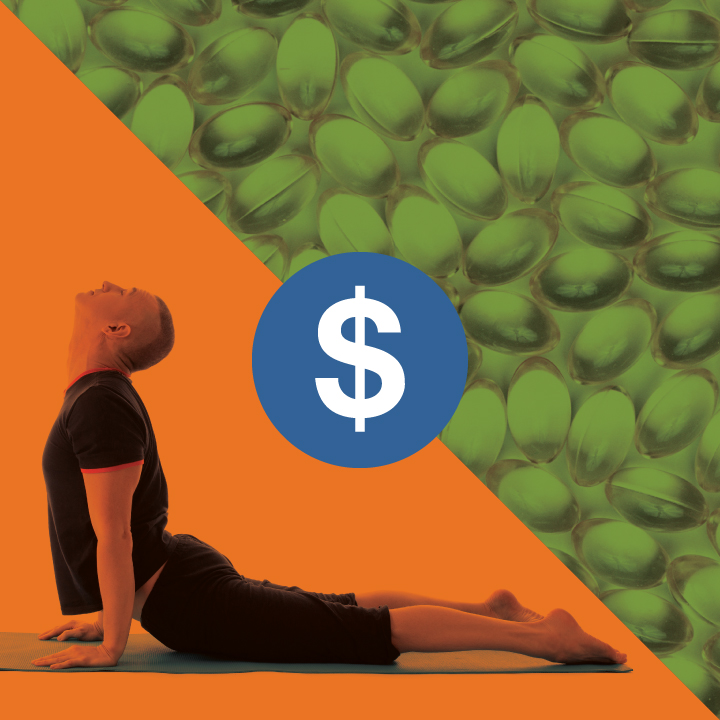Americans Spend $30 Billion a Year Out-of-Pocket on Complementary Health Approaches

About 59 million Americans spend money out-of-pocket on complementary health approaches, and their total spending adds up to $30.2 billion a year. These findings come from an analysis by the National Center for Complementary and Integrative Health (NCCIH) and the Centers for Disease Control and Prevention (CDC), based on data from a special supplement—on use of complementary health approaches—to the 2012 National Health Interview Survey (NHIS). The NHIS is a very large survey conducted annually by CDC's National Center for Health Statistics. The analysis was published in National Health Statistics Reports.
Previous studies have estimated how much American adults spend on complementary health approaches, but this new analysis is the first to provide data on children, on total spending across age groups, and on mean spending per user for any use of these approaches.
Data on about 44,700 participants were analyzed; they included about 34,500 civilian, noninstitutionalized adults age 18 and older and about 10,200 children age 4 to 17. Information about children was provided by an adult member of the household. Here's what the analysis showed about annual spending:
- About 59 million Americans age 4 or older had at least one out-of-pocket expenditure related to a complementary health approach—55.2 million adults and 4.1 million children (23.5 percent and 7.1 percent, respectively).
- Total out-of-pocket spending for complementary approaches was $30.2 billion—$28.3 billion for adults and $1.9 billion for children—representing 9.2 percent of all out-of-pocket spending by Americans on health care and 1.1 percent of total health care spending.
- Among those who had an expenditure on complementary approaches, the mean out-of-pocket spending per person was $510.
How much did Americans spend on different types of complementary approaches? The survey showed that:
- Americans spent $14.7 billion out-of-pocket on visits to complementary practitioners. This is almost 30 percent of what they spent out-of-pocket on services by conventional physicians ($49.6 billion). They spent more on visits to complementary practitioners than on natural product supplements or self-care purchases (see below), and their mean annual out-of-pocket expenditure for practitioner visits was $433.
- Americans spent $12.8 billion out-of-pocket on natural product supplements, which was about one-quarter (24 percent) of what they spent out-of-pocket on prescription drugs ($54.1 billion). The mean annual out-of-pocket expenditure in this category was about $368.
- Total spending on purchases related to self-care approaches (for example, homeopathic medicines and self-help materials, such as books or CDs, related to complementary health topics) was $2.7 billion, and the mean annual out-of-pocket expenditure per user was $257.
As family income went up, out-of-pocket spending on complementary approaches went up, and it did so significantly. For example, the average per user out-of-pocket expenditure for complementary health approaches was $435 for people with family incomes of less than $25,000, and $590 for those with family incomes of $100,000 or more. Out-of-pocket expenditures for visits to complementary practitioners averaged $314 for people with family incomes of less than $25,000 and $518 for those with family incomes of $100,000 or more.
More was spent on complementary approaches for adults than for children. This probably reflects the fact that there are far more adults than children in the U.S. population. Also, adults are more likely than children to use complementary health approaches.
Some strengths of this study, the authors note, are the sample's very large size and nationally representative character. A limitation is that all NHIS data are self-reported by respondents, which means that they could be affected by factors like personal bias or memory.
The authors did an earlier study on cost data from the 2007 NHIS, which was not directly comparable to this one because of differences in survey design. However, both indicated that while spending on complementary approaches is a small fraction of total U.S. health care spending, it is a substantial piece of out-of-pocket spending on health care.
Reference
- Nahin RL, Barnes PM, Stussman BJ. Expenditures on complementary health approaches: United States, 2012. (433KB PDF) National Health Statistics Reports. Hyattsville, MD: National Center for Health Statistics. 2016.
Additional Resources
Publication Date: June 22, 2016